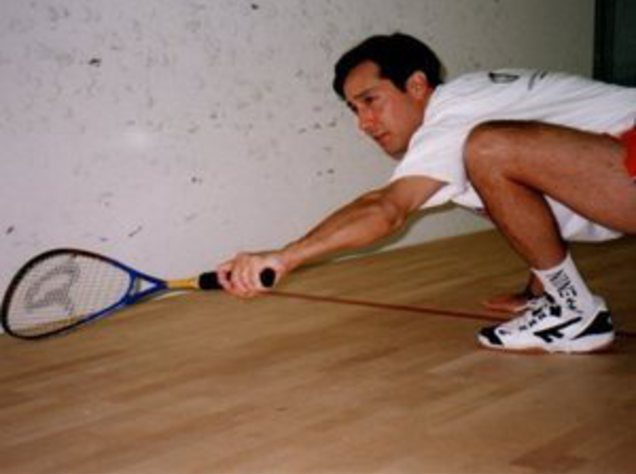Being “Deceptive” in Squash
I’m often asked by students to teach them how to play deceptive shots or how to be ‘tricky’.
We all can incorporate better deception into our games by understanding how changing an established tactical pattern of play can deceive our opponents. For example, if when answering a boast to the forehand front corner, your replies have been mostly crosscourts – a simple straight drive can surprise your opponent. This form of deception (changing a tactical pattern of play) is a simple and effective method to add to your game, and one that applies to players of all levels.
What exactly is deception? In practical terms, deception is when your opponent has difficulty reading your choice of shots. The element of surprise can be achieved either accidentally or by choice. I will be concentrating on the latter in this article.
Most players underutilize deception in their squash games. Aside from upsetting your opponents’ rhythm and confidence, there are two main advantages for using deception:
1. To make your opponent expend more energy, and
2. To make your opponent late in retrieving your shots.
There are three fundamental means of adding deception to your game, which are:
1. Abrupt tactical pattern changes (deception occurs after the ball has been struck).
2. Static biomechanics – (i.e. hold, shielding the ball – deception occurs before the forward swing is initiated).
3. Dynamic biomechanical changes (i.e. fakes, topspin, wrong side of the racquet, etc. – deception occurs during the strike).
For the purpose of this article, I will only be concentrating on the first point – abrupt tactical pattern changes.
Here are some tactical deception tips for you to try your next time out on the squash court. I have geared them to the various skill levels:
3.5 & lower: Drive – Drop Deception off the Boast: To achieve deception play approximately 80% drives versus 20% straight drops. Establish the drives as the dominant shot and occasionally play the drop. Even if your drop is not particularly good opponents at this level often will wait in the backcourt.
4.0: Straight Drop – Crosscourt Lob off the Boast: At this level, establish the straight drop off the boast, and continue playing it until your opponent starts rushing forward; then change to a crosscourt lob. Often opponents are quick enough to get to the drops but have difficulty when you change ball direction. This tactic helps you develop greater awareness of your opponent’s position.
4.5: Backcourt Combination: During a backcourt rally where you hit mostly boasts or straight, suddenly change to crosscourt or a skid boast (played high off the side wall much further up than a normal boast). If played unexpectedly, this change of shot direction can be deadly. Do not try this with a cold ball.
5.0: Half-Volley Working Boast: When your opponent hits a short straight drive, quickly strike the ball after the bounce for a boast. Often your opponent will not expect you to play the ball so early and will lose a half-step. Gogi Allaudin, former world #2 in the 70s, used this shot to break his opponent’s stamina and rhythm.
5.5 & up: Stun Drive/Short Angle off a Straight Drive: Off a slow- or medium-paced straight drive, hit a short stun drive or a short angle (a short angle is basically a hard, low, trickle
boast played from the T or deeper in the court). Shape your racquet as you normally do and your opponent will tend to read a straight length instead. Former World Champion Rodney Eyles used the short angle very effectively to send opponents scrambling up.
The idea behind deceptive combinations is to lure your opponent into thinking that you almost always play a certain pattern and then change it at a critical moment. Apply these tactical shot-combination patterns to your game and you should see immediate results. You will enjoy watching your opponent run the wrong way!
How useful was this post?
Click on a star to rate it!
Average rating 4.7 / 5. Vote count: 3
No votes so far! Be the first to rate this post.



